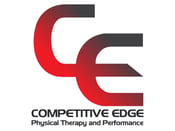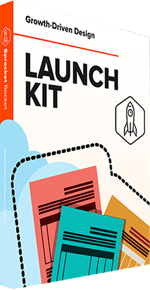8 Common Back Pain Myths: Debunked!
Back pain can be a scary thing. You can't move normal, you're worried something may be really wrong, you don't want to injure yourself, and you're worried you may make it worse by continuing to exercise. These are all normal responses, but luckily most cases of back pain are minor things with no cause to worry. Here Dr. Taylor breaks down 8 common back pain myths he hears from patients and tells you the TRUTH behind them all!
Myth 1: Arthritis=Pain
FACT: While arthritis in the spine is often present in people as they age, it does NOT have any association with the presence of pain. Terms like "degenerative disc disease", "spondylosis", and "facet joint arthritis" can sound scary but these are just normal effects of aging. What is more likely the culprit for pain is the lack of movement and support around your spine, which happens from a lack of movement and exercise. Pain and stiffness is a protective response when your body feels weak and unstable in an area. So therefore the solution must be personalized and progressive movement, not blaming the arthritis.
Myth 2: Rest will solve your back pain
FACT: Resting is NOT the answer! The back and spine is a strong and resilient structure in our body. Often pain comes from doing too much activity that causes increased strain, or too little activity that makes it get weak and immobile. When dealing with back pain, rest will only cause your back and spine to get weaker and more immobile. In reality, the best thing you can do is some flexibility and strengthening exercises to get your spine moving better and your muscles more stable!
Myth 3: An x-ray or MRI is always needed
FACT: Nearly all cases of back pain don't need an X-ray or MRI! The structure of your spine does not correlate to pain or the causes of your pain. What the scans don't show you in the poor movement and stability of your spine that is most likely causing you to be in pain. Do yourself a favor, and unless there are any concerning findings your doctor wants to look at-skip the scan the next time you have back pain
Myth 4: Only surgery can fix your pain
FACT: Surgery should only be used in EXTREME cases, like less than 1%! Once you cut into your body there is no undoing that process! I understand surgery is needed in some cases- I even referred a recent patient for surgery during his evaluation because I knew the symptoms he was having were concerning enough to need it. But if you've been dealing with nagging back pain or nerve pain, and you haven't tried PT or any other conservative treatments such as Chiropractic, then you are spending a lot of time and money on something that probably won't fix you.
Myth 5: All Physical Therapy for Back Pain is the same
FACT: Many Physical Therapists are unaware of the proper rehab methods for back pain. Most PT's stick to things that are too easy and don't challenge the areas of the back that need it most, so no wonder their rehab doesn't work! I was lucky enough to have a great mentor early in my career to teach me how to properly manage conditions like sciatica and nerve pain, and I have taken many amazing continuing education courses in my years as a PT that have laid the groundwork for getting my patients amazing and long lasting results!
Myth 6: Your pain is due to an injury
FACT: The back and spine is RARELY injured. Unless you fell from a ladder or were in a car accident, not many things could cause injury to your spine. But what about the times your "threw out" your back? It might feel like a significant injury, but you most likely strained the muscles around your spine. It feels so bad because your spine is tightening up to protect you. But just like any other muscle strain, it needs a specific and progressive plan to get pain free and prevent longer term issues.
Myth 7: Posture is causing your pain
FACT: Posture is NOT the cause of your pain. You might feel worse after you sit a long time, but that is because you just haven't moved your back or spine in a while. Tons of research has looked at posture and pain and found little relation between the 2. This brings us back to the common theme of this blog- movement and stability of the spine is what your body needs. When you don't have that movement of stability- even simple things will cause your back to hurt. But if your spine is strong and supported, posture will have no influence on your pain!
Myth 8: You shouldn't lift weights or exercise with back pain
FACT: Lifting weights and exercise are the BEST remedies to back pain! This is a topic I could go on for days about. We've established that many cases of back pain are due to lack of movement, strength, or stability of the back muscles. And the #1 way to work on all 3 of those is with weight lifting and exercise. But you're probably rolling your eyes at me saying "I could never lift weights with my back pain", yes at this point in time that might be true. What is ALSO true is that your back can tolerate some work without pain, so we must find that threshold and gradually expose it to more motion, more strengthening, more stability over time to progressively reduce the pain you're having and create a much more stable back that is resistant to pain! There is nothing I am more passionate about than using exercise for folks with back pain, because IT WORKS! I have seen so many patients come through my doors skeptical of the approach, and finish their PT 8-12 weeks later feeling better than they have in years! Seriously, I hear that a lot. Patients with constant chronic back issues that are so much better in just a few short months. Why is that? Personalized and progressive exercise to address the poor mobility, strength, and stability of their spine.
If you live in the Columbus Ohio area and you have been dealing with back pain, whether it's 2 weeks or 10 years, reach out to speak directly with Dr. Taylor if you're ready to take back your active lifestyle. Just click the button below and schedule a free phone consultation to get your pain free performance assessment and start on the road to recovery!




Comments